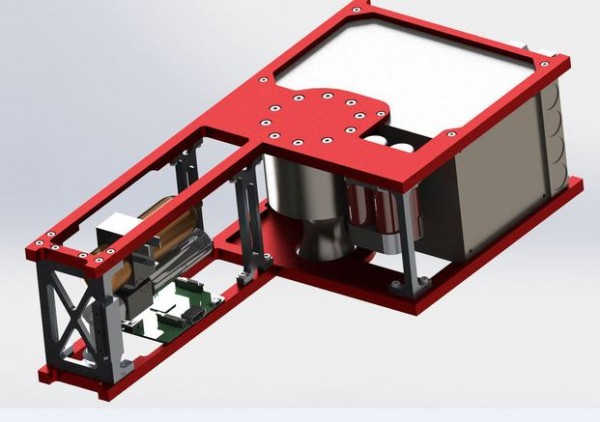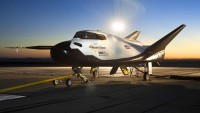Water-powered Satellite to Orbit the Moon
| Arthur Dominic Villasanta | | Sep 29, 2016 05:00 AM EDT |
(Photo : Cornell University) Cornell's water-powered CubeSat.
Cislunar Explorers, a team of Cornell University graduate and undergraduate students, will attempt to get a small cube satellite (CubeSat) to orbit the Moon powered by water as its "rocket fuel."
This attempt, scheduled for 2018, will also be the first-ever attempt by a CubeSat to orbit the Moon.
Like Us on Facebook
Cislunar Explorers is one of 10 teams taking part in a competition called the Cube Quest Challenge, a NASA program. The challenge facing the teams is to design, build and deliver "flight-qualified, small satellites."
NASA says the satellites must be able to perform "advanced operations near and beyond the moon." The top three finishers will earn a ride on NASA's Space Launch System (SLS) rocket in early 2018, to compete in either the Deep Space Derby or the Lunar Derby.
CisLunar Explorer is the only competitor using water to power its CubeSat.
The idea for a water-powered CubeSat came from Mason Peck, who works at Cornell University and who once worked as NASA's chief technologist. Peck has always wanted to use something other than rockets to push spacecraft beyond earth.
Why not water, or more specifically, its two components, hydrogen and oxygen?
Cornell's water-powered CubeSat has a very important goal, and that's to demonstrate you can use water as a propellant, said Peck.
The CubeSat is two "L"-shaped halves that will split apart and gradually separate miles from each other. Both halves will set a course for the moon. The twin satellites will spin as they hurtle forward.
The spinning will create angular momentum (like a spinning top) that will help keep them from tumbling off course.
With energy from the sun, water stored in tanks at the bottom of the "L" is electrolyzed into hydrogen and oxygen gases.
These gases will combust in short bursts, 30 minutes to an hour apart, to provide propulsion. The spinning will also separate the liquid water from the combustible gases.
As the CubeSats enter the moon's gravitational pull, they will slow down and be swung into a distant Earth orbit, eventually reconnecting with the moon days later.
It's during this second rendezvous the CubeSats will be traveling slowly enough to be sucked into lunar orbit, some 6,200 miles above the surface of the moon.
In addition to the water-based propulsion, the other core technology to be demonstrated by the team is optical navigation, said project manager Kyle Doyle, a doctoral student in aerospace engineering.
TagsCislunar Explorers, cube satellite, CubeSat, moon, Cube Quest Challenge, NASA, water, Hydrogen, Oxygen, Mason Peck
©2015 Chinatopix All rights reserved. Do not reproduce without permission
EDITOR'S PICKS
-

Did the Trump administration just announce plans for a trade war with ‘hostile’ China and Russia?
-

US Senate passes Taiwan travel bill slammed by China
-

As Yan Sihong’s family grieves, here are other Chinese students who went missing abroad. Some have never been found
-

Beijing blasts Western critics who ‘smear China’ with the term sharp power
-

China Envoy Seeks to Defuse Tensions With U.S. as a Trade War Brews
-

Singapore's Deputy PM Provides Bitcoin Vote of Confidence Amid China's Blanket Bans
-

China warns investors over risks in overseas virtual currency trading
-

Chinese government most trustworthy: survey
-

Kashima Antlers On Course For Back-To-Back Titles
MOST POPULAR
LATEST NEWS
Zhou Yongkang: China's Former Security Chief Sentenced to Life in Prison

China's former Chief of the Ministry of Public Security, Zhou Yongkang, has been given a life sentence after he was found guilty of abusing his office, bribery and deliberately ... Full Article
TRENDING STORY

China Pork Prices Expected to Stabilize As The Supplies Recover

Elephone P9000 Smartphone is now on Sale on Amazon India

There's a Big Chance Cliffhangers Won't Still Be Resolved When Grey's Anatomy Season 13 Returns

Supreme Court Ruled on Samsung vs Apple Dispute for Patent Infringement

Microsoft Surface Pro 5 Rumors and Release Date: What is the Latest?














